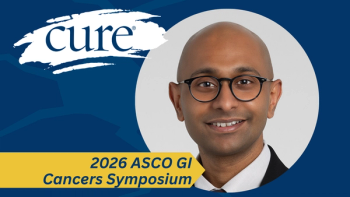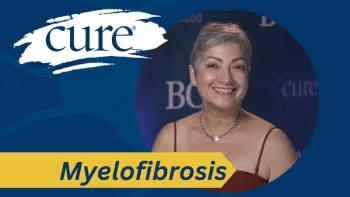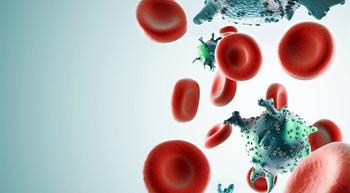
CAR-T Cell Therapies Provide Patients With Mantle Cell and Follicular Lymphoma a ‘One and Done’ Treatment Option, Expert Says
CAR-T cell therapies offer patients with lymphoma a chance for long-term remission, but none have yet to receive a greenlight from the FDA as a first line of treatment.
A CAR-T cell therapy alters a patients T cells to attack blood cancers such as mantle cell lymphoma and follicular lymphoma.
In a recent interview with CURE®, Dr. Lori A. Leslie, director of the Indolent Lymphoma and CLL Research Program at John Theurer Cancer Center in Hackensack, New Jersey, discussed CAR-T cell therapy and how the novel treatment option offers patients the potential to have long-lasting remission.
Can you give an overview of CAR-T cell therapy and how it works?
CAR-T cell therapies are a really exciting new therapy across B-cell cancers including lymphomas. (They’re) FDA-approved in diffuse large B-cell lymphoma as well as mantle cell lymphoma and follicular lymphoma. And what it is basically is taking the patient's own T cells, their own immune system, and engineering them to recognize the tumor cells as abnormal, because that immune system usually should recognize and survey the body for abnormal cells but that systems failed.
So (a) CAR-T cell therapy is trying to restore that surveillance and ability of your immune system to be what fights the cancer. In mantle cell and follicular lymphoma specifically, patients who have had previously treated disease can get CAR-T cell therapy as kind of a “one-and-done” approach to treat their lymphoma.
What do you mean by a “one-and-done” approach, and how does CAR-T cell therapy differ from other treatments in the space?
CAR-T cell therapies are different than a lot of the other therapies we think about for patients with lymphoma. So for many patients with mantle cell lymphoma or follicular lymphoma, their first line of therapy (is usually) chemotherapy with an immune therapy like a CD20 antibody for example. That can be usually a six-month course. Sometimes we use a transplant, for example, in patients with mantle cell, but overall patients are pretty familiar with chemotherapy in the frontline setting.
Once the patient relapsed, whether you're talking about mantle cell or follicular lymphoma, most patients get medications that are targeted, so not chemo. But many of those approaches are long term. For example, in mantle cell lymphoma, we use a group of drugs called BTK inhibitors, which include things like (Imbruvica; ibrutinib), (Calquence; acalabrutinib), (Brukinsa; zanubrutinib), and those drugs are taken in mantle cell lymphoma until a patient relapses or has unacceptable side effects.
In mantle cell, if you're considering CAR-T cell therapy, basically patients get the cells collected. And then they get a few days of relatively low-dose chemotherapy to kind of prepare the body. And then they get a single infusion of the CAR T cells, which then grow (and) expand in the body and fight the cancer. So really, it's a different approach for patients who have been used to being on long-term therapy, that you get this one infusion, you get monitored through the period where you're higher risk for side effects, and then should be on a treatment-free observation, hopefully in remission, potentially long term.
CAR-T cell therapies and BTK inhibitors are both really exciting, but we still have upfront chemotherapy. Why do patients still have to undergo chemotherapy first, and do you expect these other treatments to eventually move into the frontline setting?
CAR-T cell therapy currently is used in the relapsed/refractory setting, and I think the future looks a little more clear in mantle (cell lymphoma) than in follicular (lymphoma). So in mantle cell lymphoma, there’s really still an area of unmet need, particularly patients that have high-risk mantle cell lymphoma called blastoid or have an abnormality in a protein called P53. We know those patients do not respond well to chemotherapy but really haven't had other great options outside of clinical trials in the frontline setting.
There are (already) studies going on moving CAR-T cell therapy earlier in the treatment landscape, maybe for people who have only had chemo and not BTK inhibitors, or even in the future I anticipate as early frontline with minimal chemotherapy for certain select patients.
In follicular lymphoma, we have a lot more treatment options and the biology is really different. So not only do we have chemotherapy, but we have other targeted agents like (Revlimid; lenalidomide), for example, that retrains a patient's immune system by using a pill and is taken for about a year in follicular lymphoma.
We've got a group of drugs called PI3 kinase inhibitors that are long-term therapies. We've got another new agent called an EZH2 inhibitor, which is tazemetostat (Tazverik), which also is approved in follicular lymphoma. So I think the landscape is more challenging.
But I can say CAR-T cell therapy, again, being that one and done type of approach is moving earlier in our treatment landscape. And studies are ongoing as early as second line. The big question in follicular and mantle cell is when you have all these options, how do you sequence? What's the best prior therapy to help enhance the CAR T cell and mitigate or reduce the chances of some of the earlier side effects you can see from CAR-T cell therapy. And that's an active area of investigation, not only on clinical trials, but also as we look at what's called real-world data.
For more news on cancer updates, research and education, don’t forget to




